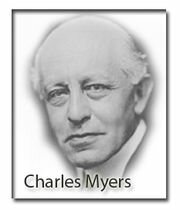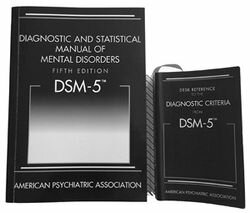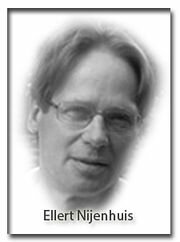Other specified dissociative disorder

"Other specified dissociative disorder" is a complex Dissociative Disorder, which establishes itself securely during childhood, and is thought to be caused by child abuse, (rather than just trauma) and a lack of secure attachment with a primary caregiver. An absence of these two important childhood accomplishments eventually result in an accumulation of unresolved trauma, causing structural dissociation. In this disorder, there is always one distinct state that represents a good chunk of the personalityEvery individual has a personality that is composed of many diverse, fragmentary and generally illusory images of [[Personality|self]]. (see multiples) The DSM-IV uses the term identity in its definition of dissociation. (see identity) {{Rp|127}}, and two or more less than distinct states that are curiously self sufficient, but don't bother to take full control often. The unique characteristics of other specified dissociative disorder become blatantly obvious when the states demonstrate their ability to function as a seemingly whole unit. This is not a disorder that is "almost like" dissociative identity disorder in any respect, other than the fact that the less than distinct states in both disorders have the capabilities to take "full control." [3]:243-493 This disorder is thought to exist in childhood, but in some individuals, it does not show itself until they are in an extreme situation later in life. Examples include: long term political imprisonment, participating in cult activity, terror organizations, prisoners of war, kidnap victims, and those involved in brain washing and thought reform programs. [4] }
Contents
A brief history and where we are today
That there are distinct states and less than distinct states is not new information. Pierre Marie Félix Janet, (born May 30, 1859, in Paris, France and died February 24, 1947, Paris, France.) a French psychiatrist and neurologist lectured and wrote about the concept in his lifetime. Modern day researchers and clinicians, Ellert Nijenhuis, Onno van der Hart and Kathy Steele brought Janet's work back to the spotlight in their 2006 book, , where they explain in great detail how there is one distinct state in other specified dissociative disorder, and two or more distinct states in dissociative identity disorder. [2]:vii-xi In Structural Dissociation A distinct state is referred to as an "apparently normal part of the personality" and the less than distinct state is known as the "emotional part of the personality". [2]:28-43 Not everyone shares the same terminology, [5] and so for ease of use on this page we will use the terms distinct state and less than distinct state.
There is one distinct personality state in OSDD
In other specified dissociative disorder there is only one distinct state which many with this disorder describe as their "frontA term sometimes used by those with dissociative identity disorder to refer to the alter who is either in executive control of the individual, or who has come close to the one that is in executive control. (see executive control)." It's quite interesting and acutely different from the distinct states found in dissociative identity disorder, a curiosity that appears to be partly due to their chemical, physical and neurological makeup. The one distinct state in other specified dissociative disorder presents as a isolated state that appears to be highly influenced by the less than distinct states, which through "passive dissociationDissociation is a compartmentalization of experience, where elements of a trauma are not integrated into a unified sense of the self. {{Rp|4-810, 127}}The lay persons idea of [[dissociation]], that which exists in the normal mind, is not what is referred to in this document. {{Rp|233-234}}" are "triggered" to release their fears and vehement emotions onto the distinct state. In other specified dissociative disorder this is experienced in such a way that it's hard to ignore, and these people often seek out treatment, which is in contrast to those with dissociative identity disorder who normally have no idea there is anything wrong with them. This is in great part due to the makeup of the dissociative boundaries around the [[states found in individuals with dissociative identity disorder.
Less than distinct states
Less than distinct states are child-like and in other specified dissociative disorder identify with a particular age or age range, which is unlike the less than distinct states in dissociative identity disorder. [2] Less than distinct states in other specified dissociative disorder switch with each other, and they also switch with the one distinct state. The actions can be performed with or without dissociative amnesia involved. These less than distinct states can also switch with the distinct state in what is called a full switch, which almost always results in a lack of continuity between the two states.
Differences between OSDD and DID
Two complex Dissociative Disorders listed in the DSM-5 are markedly different from each other. The most basic difference is that dissociative identity disorder will always have two or more distinct states, while other specified dissociative disorder will only ever have one, [6] [7] [2] which is a fact which has been shown repeatedly on fMRI scans.
The less than distinct states contain vehement emotion and usually act child-like, [6] [8] [7] and the less than distinct states in other specified dissociative disorder are usually less elaborate than the less than distinct states in dissociative identity disorder. [9] [10]:337-366 [7] [11] [2] If a less than distinct state in other specified dissociative disorder is in executive controlThe state that has control of an individual at that moment has executive control, and the dissociated state most often in executive control is commonly called the host. {{Rp|27}} a great deal and appears elaborate, that still does not change its chemical and neurological makeup, and so it's still a less than distinct state.


Symptoms
The less than distinct states in other specified dissociative disorder are child-like and they are also highly aware that they are in distress. [12] [2]:73-88 The main symptom of other specified dissociative disorder is dissociation. [8] [13] [10]:447-469 [12] The individual as a whole is subject to the following symptoms: Dissociative amnesia, but not true amnesia. Other symptoms include voices heard, self alteration, derealization, [depersonalization]], flashbacks, trance, identity confusionDefined as "a feeling of uncertainty, puzzlement, or conflict about one's own identity. "{{Rp|13}}. The structured clinical interview for the dissociative disorders and other diagnostic tools assess identity confusion. {{See also| Identity confusion}} {{See also| Diagnosis}}, awareness of other states, and conversion symptoms,. They also experience the Schneiderian first-rank symptoms that include voices arguingTwo or more voices conversing, they may be arguing. Common in both schizophrenia and dissociative identity disorder. This is a type of auditory hallucination. {{Rp|45}} In dissociative identity disorder the voices belong to alter identities and this may extend to alters who are contending for physical control, for example involving the person feeling a force or an "other" that ties to control or change the person's actions, or feeling or hearing an angry other that tries to control the person.{{Rp|230}}, voices commentingRefers to voices commenting (in the form of a running commentary) on the person's behavior or thoughts. Common in both schizophrenia and dissociative identity disorder. This is a type of auditory hallucination. {{Rp|45}}{{Rp|230}}, thought withdrawalThe person believes thoughts have been taken away from his/her mind. This is a symptom of schizophrenia,{{Rp|45}} but either thought withdrawal and thought insertion are also very common in people with Dissociative Identity Disorder. {{Rp|527}}, thought insertionThe person believes that thoughts that are not his/her own thoughts have been inserted into his/her mind. {{Rp|45}}This is a symptom of schizophrenia, but either thought withdrawal and thought insertion are also very common in people with Dissociative Identity Disorder. {{Rp|527}}, made impulsesThese impulses for action are imposed on the person and do not feel like they belong to the person, who feels like the impulses are "coming from somewhere else or someone else". In dissociative disorders this can some other part is trying to overrule the host/apparently normal part of the personality. A Schnieder first-rank symptom often present in schizophrenia but common in DID.{{Rp|231}}In schizophrenia or psychosis the impulses may be given a delusional explanation, for example naming a person or object who the impulses appear the be coming from., made feelings'Made' or intrusive feelings and emotions are unexpected surges of feeling-pain, hurt, anger, fear, shame, and so on. Often these surges of feeling are inexplicable and frankly puzzling". A Schnieder first-rank symptom often present in schizophrenia. These tend to be partially dissociated intrusions from another self-state, fairly common in "PTSD, borderline personality disorder, bipolar disorder, panic disorder and ADHD."{{Rp|231}} and made actions. Finally these individuals will struggle with auditory hallucinationsThe DSM-IV-TR psychiatric manual defined hallucinations as a "sensory perception that has the compelling sense of reality of a true perception but that occurs without external stimulation of the relevant sensory organ. Auditory hallucinations are common both in schizophrenia and dissociative identity disorder. {{Rp|525}}Hallucinations can be auditory (voices, noises or other sounds), voices commenting on the person's behavior or thoughts, voices conversing, somatic or tactile (peculiar physical sensations), olfactory (unusual smells), visual (shapes or people that are not present). {{Rp|45}}Visual hallucinations are the most common type of hallucination and are often in geometric forms and figures {{Rp|127}} Illusions are similar to visual hallucinations but are based on real images or sensations. and visual hallucinations which are not psychoticA person experiencing psychosis, or a characteristic of psychosis. {{Rp|24}}, but the symptoms imitate psychotic symptoms. [10]:228-234Epidemiology
In a 2011 study on Dissociative Disorders, the following was reported: "These (those included in this study) clinical case series have also documented that dissociative patients report highest frequencies of childhood psychological traumaThe most fundamental effect of trauma is dissociation, so we define trauma as the event(s) that cause dissociation. {{Rp|75}} The original trauma in those with dissociative identity disorder was failure of secure attachment with a primary attachment figure in early childhood. {{Rp|83}} among all psychiatric disorders. Childhood sexual (57.1%–90.2%), emotional (57.1%), and physical (62.9%–82.4%) abuse and neglect (62.9%) are among them (2–6)." The prevalence of Dissociative Disorders for inpatient and outpatient psychiatric settings is reported to be around 10%. A study conducted in Turkey on 648 females resulting in 18.3%, and the largest group had "DDNOS" (DSM-IV category that has been replaced by OSDD). [14]
Etiology
Other specified dissociative disorder results from a combination of factors that combine to create the perfect storm with neglect only needing to be experienced within one "childhood developmental stage," [9]:208-211 [7] and is a disorder of trauma. In the 2014 book, "The Body Keeps The Score," Bessel van der Kolk offers an interesting view when he argues that all trauma is harmful, and that trauma is either buried or accepted. [13] Other authors maintain that only "subjective trauma" causes problems. [15] Whichever view you take, there does not seem to be any genetic factor for this disorder since anyone can, with the right circumstances, develop other specified dissociative disorder. [11]
| The synonym TRAUMA sums up DID etiologyThe study of the cause of a disorder or disease. In the case of dissociative identity disorder, early and severe childhood trauma, especially abuse is considered to be the cause. |
|---|
|
Treatment
Medication does not aid in the treatment of other specified dissociative disorder. [16] Therapeutic work offers support and encouragement while the patient changes the way their mind and brain work through the hard work of processing trauma events, reduction of fear, and acceptance of all self states. [17] [18] The only treatment that has ever been proven to aid in the integration process of any individual with this disorder is talk therapy or self work that addresses integration concerns.
Integration
Memory sharing is primary to the resolution of this disorder. During most of the integration work there will be overlapping phase work. [10]:599-652 [19] [20] There are no medications to cure or manage the disorder; the best results are obtained when unprocessed trauma events are moved to the hippocampus of the mind where memory should be stored and states break down dissociative boundaries associated with them and allow pervasive communication. [21] See integration for more.
Prognosis
When untreated there is chronic and recurrent symptoms varying overtime. [22] [10]:637-652 Around four-years of psychotherapy are usually needed for adults (less for children) to allow time for trauma memory processing, and to obtain a unified sense of self. [23] [10]:637-652History
Paul F. Dell led a drive to understand dissociation and related disorders in his multi-authored, book. The massive book was an attempt made in 2009 to bring to the forefront the main ideas of the research community, [24] [11] but there was little agreement at that time and the book strongly reflected that fact. Today things are different, and neurologist, researchers and clinicians are coming together with the advent of fMRI imaging that leaves little to the imagination. Distinct and less than distinct states are clearly seen on the images and their characteristics can be observed. This work brings the research community to find little to argue about that an fMRI cannot prove or disprove. Sadly history has not been so kind. The accurate work by Pierre Marie Félix Janet was shunned in favor of other ideas after Janet died. There was a media circus in response to movies, books and other public information sharing including "Sybil," "Three Faces of Eve," and the Billy Milligan story. The symptoms and presentation were mixed portrayals of dissociative identity disorder, and other specified dissociative disorder, comorbid disorders and interjected modeling of disease behaviors. All this confusion created a Frankenstein effect that was more fantasy than reality and it continues in the media today. [9]
DSM history and OSDD
There was nothing about "multiple personalities" in the DSM-I, but the DSM-II did mention the term as a symptom of neurosis. The DSM-III was the first time that "multiple personality disorder" was listed in a DSM as a diagnosis of its own, and other specified dissociative disorder was never included in a DSM until the DSM-IV.
OSDD, BPD, PTSD, Schizophrenia
Mental health professionals with inadequate training have misdiagnosed other specified dissociative disorder throughout history, [25] but with today's knowledge this should soon be a thing of the past. Below are common disorders that use to be confused with other specified dissociative disorder.
- Dissociative identity disorder is eliminated from consideration when there is a switch between two distinct states, because only one distinct state exists in other specified dissociative disorder. [10]:429-434
- Borderline personality disorder would be removed from consideration since the presenting distinct state would be unable to attend to daily life without the immediate influence of vehement emotion from the less than distinct state. [7] [26]
- PTSD would be eliminated because the one less than distinct state in this disorder is primitive. The less than distinct state can take over in posttraumatic stress disorder, but it's limited to re-experiencing trauma. It cannot take over enough to act on its own. [10]:447-470 [10]:495-510
-
Schizophrenia has been confused with other specified dissociative disorder, but in schizophrenia there are no states. What is seen is a delusional pattern of "state shifting." [10]:557-570

Diagnostic manual
Diagnostic manuals like the DSM and ICD are not meant to be used to understand any mental disorder. [4]:19 Their intent is to give the minimum criteria needed to diagnose a disorder. The criteria listed here is paraphrased. The Diagnostic and Statistical Manual of Mental Disorders (DSM-5), was released to the public May 27, 2013. Pages 291-298 of the DSM-5 give a written account that follows an older, more or less general consensus to what dissociative identity disorder is, but it's not up to par with the superior criteria that is presented in the DSM-5. [4]:291-298 [3]:243-470 [27] [28] [29] [30] Although what a distinct state is and is not, has been known, and then lost throughout history, the information is accepted well enough today to be presented with full confidence. [31] [19] [3]
| DSM-5 was last updated May 2013 |
|---|
|
"Criteria A" in the DSM-5 uses the terminology less than marked discontinuities in sense of self and agency, which perfectly describe what must be identified in this Dissociative Disorder to diagnosis it. [3]:1-242 Research has come to the point where the differences between a distinct state and a less than marked discontinuities in sense of self and agency is. This is important because in other specified dissociative disorder there is only one distinct state, which is in contrast to dissociative identity disorder where there is always two or more distinct states. This can and has been repeatedly verified using fMRI scans. [29]
Edit this site
We encourage those with knowledge of the trauma-stressor and dissociative disorders to join our project and help to create an accurate and helpful information based wiki. To do so, simply make an account and review our editor guidelines.Other branches of the Trauma and Dissociation Project
Dissociative Identity Disorder.org is a multi-authored peer written site, reviewed by a health care professional.
References
- ^ Schlumpf, YR; Reinders, AATS, Nijenhuis, ERS, Luechinger, R, van Osch, MJP, et al. (2014). Dissociative Part-Dependent Resting-State Activity in Dissociative Identity Disorder: A Controlled fMRI Perfusion Study. PLoS ONE, volume 9, issue 6, 2014. (doi:10.1371/journal.pone.0098795)
- ^ a b c d e f g Vanderhart, Onno (2006) (coauthors: Nijenhuis, Ellert; Steele, Kathy). . New York:Norton. 978-0393704013.
- ^ a b c d Lanius, Ulrich (2014) (coauthors: Sandra L. Paulsen, Frank M. Corrigan). . New York:Springer Publishing Company. 10: 0826106315.
- ^ a b c d e f g DSM5, APA (2013). . 978-0890425558.
- ^ Leo, Giuseppe (2014) (coauthors: David Mann, Georg Northoff, Allan N Schore, Robert Stickgold, Bessel A Van Der Kolk, Grigoris Vaslamatzis, Matthew P Walker). Psychoanalysis and Neuroscience. 10: 8897479065.
- ^ a b Dorahy, Martin; van der Hart, Onno (2014). DSM-5’s PTSD with Dissociative Symptoms: Challenges and Future Directions. Journal of Trauma and Dissociation. (doi:10.1080/152906)
- ^ a b c d e Nijenhuis, Ellert; van der Hart, Onno (2011). Dissociation in Trauma: A New Definition and Comparison with Previous Formulations. Journal of Trauma & Dissociation, volume 12, issue 4, 2011. (doi:10.1080/152992)
- ^ a b Fisher, Sebern (2014). . Norton. 978-0393707861.
- ^ a b c Chu, James A. (2011). . Hoboken, N.J.:John Wiley & Sons..
- ^ a b c d e f g h i j Dell, Paul (2009) (coauthors: Barlow, MR, Beere, DB, Bianchi, I, Blizard, RA, Bluhm, RL, Braude, SE, Bremner, JD, Bromberg, PM, Brown, LS, Bryan, RA, Butler, LD, Cardena, E, Carlson, EA, Carlson, E, Dalenbert, C, Dallam, S,Dell, PF, den Boer, JA, Dorahy, MJ, Dutra, L, Evans, C, Fairbank, JA, Farrelly, S, Ford, JA, Frankel, AS, Freyd, JJ, Ginzburg, K, Gold, SN, Howell, EF, Jager-Hyman, S, Jessop, MA, Kletter, H, Kluft, RP, Koopman, C, Lanius, RA, Lawson, D, Liotti, G, Lyons-Ruth, K, Moskowitz, A, Nijenhuis, ERS, Nurcombe, B, O'Neil, JA, Ozturk, E, Pain, C, Paulson, KL, Read, J, Ross, CA, Rudegeair, T, Saltzman, K, Sar, V, Schore, AN, Scott, JG, Seibel, SL, Siegel, DJ, Silbert, JL, Silvern, L, Simeon, D, Somer, E, Sroufe, LA, Steele, K, Stern, DB, Terhune, DB, van der Hart, O, van Duijl, Marjolein, Waelde, LC, Weiner, LA, Williams, O, Yates, TM, Zanarini, MC.). . New York, NY:Routledge. 978-0415957854.
- ^ a b c Siegel, Daniel (2012). . Guilford press. 978-1462503902.
- ^ a b Dorahy, Martin; Bethany L Brand, Vedat Şar, Christa Krüger, Pam Stavropoulos, Alfonso Martínez-Taboas, Roberto Lewis-Fernández, Warwick Middleton (2014). Dissociative identity disorder: An empirical overview. Aust N Z J Psychiatry, volume 48, issue 5. (doi:)
- ^ a b vanderKolk, Bessel (2014). . Viking Adult. 10: 0670785938.
- ^ Sar, Vedat. Epidemiology of Dissociative Disorders: An Overview. Epidemiology Research International. (doi:)
- ^ Frewen, Paul; Lanius, Ruth (2014). Trauma-Related Altered States of Consciousness: Exploring the 4-D Model. Journal of Trauma & Dissociation, volume 15, issue 4. (doi:)
- ^ Gentile, JP; Dillon, KS; Gillig, PM (2013). Psychotherapy and Pharmacotherapy for Patients with Dissociative Identity Disorder.. Innovations in clinical neuroscience, volume 10, issue 2, 2013 Feb, page 22-29.
- ^ Loewenstein, R. J.; Brand, B. (2014). Does phasic trauma treatment make patients with dissociative identity disorder treatment more dissociative?. J Trauma Dissociation, volume 15, issue 1, 2014, page 52-65. (doi:10.1080/152950)
- ^ Loewenstein, R. J.; Brand, B.L., Spiegel, D. (2014). Dispelling myths about dissociative identity disorder treatment: an empirically based approach. Psychiatry, volume 77, issue 2, 2014. (doi:10.1521/psyc.2014.77.2.169)
- ^ a b Vermetten, Eric; Spiegel, Eric (2014). Trauma and Dissociation: Implications for Borderline Personality Disorder. Current Psychiatry Reports, volume 16, issue 2. (doi:10)
- ^ Solomon, Roger; Nijenhuis, Ellert R. S.; van der Hart, Onno (2010). Journal of EMDR Practice and Research, volume 4, issue 2, 2010, page 76-92. (doi:10.1891/1933-3196.4.2.76)
- ^ Siegel, Daniel (2010). . Bantam. 10.1521/ijgp.2010.60.4.605.
- ^ Brand, Bethany; Dorahy, Martin, Sar, Vedat, Krüger, Christa, Stavropoulos, Pam, Martínez-Taboas, Alfonso, Lewis-Fernández,Roberto, Middleton,Warwick (2014). Psychiatry Australian and New Zealand Journal of http://anp.sagepub.com/content/48/5/402 Dissociative identity disorder: An empirical overview. Aust N Z J Psychiatry, volume 48, issue 402, 2014. (doi:10.1177/0004867414527523)
- ^ Bethany L. Brand (2012): What We Know and What We Need to Learn About the Treatment of Dissociative Disorders, Journal of Trauma and Dissociation, 13:4, 387-396
- ^ Kluemper, Nicole; Dalenberg, Constance (2014). Is the Dissociative Adult Suggestible? A Test of the Trauma and Fantasy Models of Dissociation. Journal of Trauma and Dissociation, volume 15, issue 4, 2014, page 457-476. (doi:10.1080/152972)
- ^ Brand, B.; Loewenstein, Richard J. (2010). Dissociative disorders: An overview of assessment, phenomenology, and treatment. Psychiatric Times.
- ^ Fernando, Silvia Carvalho; Beblo, Thomas, Schlosser, Nicole, Terfehr, Kirsten, Otte, Christian, Löwe, Bernd, Wolf, Oliver Tobias, Spitzer, Carsten, Driessen, Martin, Wingenfeld,Katja (2014). The Impact of Self-Reported Childhood Trauma on Emotion Regulation in Borderline Personality Disorder and Major Depression. Journal of Trauma & Dissociation, volume 15, issue 4, 2014, page 384-401. (doi:10.1080/152962)
- ^ Reinders, Antje A.T.S.; Antoon T.M. Willemsen, Johan A. den Boer, Herry P.J. Vos, Dick J. Veltman, Richard J. Loewenstein (2014). Psychiatry Research: Neuroimaging, volume 223, issue 3. (doi:10.1016/j.pscychresns.)
- ^ Krüger, Antje; EHRING, T., PRIEBE, K., DYER, A., STEIL, R., BOHUS, M.. (2014). Sudden losses and sudden gains during a DBT-PTSD treatment for posttraumatic stress disorder following childhood sexual abuse. European Journal of Psychotraumatology, North America, volume 5. (doi:)
- ^ a b Obsuth, Ingrid; Hennighausen, Laura E. Brumariu and Karlen Lyons-Ruth (2014). Disorganized Behavior in Adolescent–Parent Interaction: Relations to Attachment State of Mind, Partner Abuse, and Psychopathology. Child Development, volume 85, issue 1. (doi:10.1111/cdev.12113)
- ^ Spiegel, David. An Ingeneious Study of Intergenerational Transmission of the Effects of PTSD. The American Journal of Psychiatry, volume 171, issue 8. (doi:10.1176/appi.ajp.2014.14050611)
- ^ Tiana, Fenghua; Amarnath Yennua, Alexa Smith-Osborneb, F. Gonzalez-Limac Carol S. Northd, e, f, Hanli Liua (2014). NeuroImage: Clinical, volume 4. (doi:)





